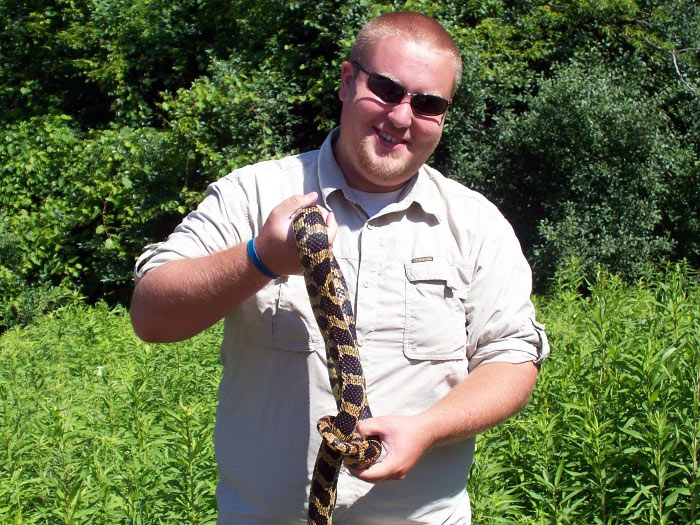Alexander D. McKelvy, a PhD student in Dr. Frank Burbrink‘s lab at the College of Staten Island, discovered a record-breaking snake while researching at Shiawassee National Wildlife Refuge in Michigan.
What makes the snake special is the size of its clutch, a term for the number of eggs it is carrying, which was tallied at 34 eggs.
This number beat out the previous record of 29 eggs. It was also nearly the longest individual found, almost breaking the record with a length of 5 feet, 9 inches. The previous record was set in 1961 in Ohio at 5 feet, 10 inches.
“We suspect that this new record is a testament to how little is actually known about snakes in general,” said McKelvy. “In lower Michigan, this snake uses wetland areas near the Great Lakes and habitat destruction has been labeled as a large part of their demise.”
“This discovery by Alex is quite important,” commented Dr. Burbrink. “It allows us to better determine the upper size limit on these snakes and also demonstrates that even the most basic natural history information on animals found in one of the most developed parts of the world is still lacking.”
McKelvy claims that his love for snakes was fostered by his parents and the Chippewa Nature Center near where he grew up in Midland, MI. His work with the wildlife refuge began shortly before his admission to The Graduate Center, CUNY. Along with his colleagues, McKelvy was working on a radio telemetry-based study of foxsnakes on the refuge, serving as a field technician. Over the course of two field seasons, the team implanted 29 snakes with transmitters and tracked them daily to record their movements and what type of habitats they were using. “The idea was to get an idea of home range size, movements, and what habitat and micro-habitat the snakes were using across the season,” said McKelvy of his time spent in the refuge.
According to McKelvy, there are two very different reasons why this discovery is important.
First, this imperiled species of snake used to be abundant and is now protected across most of its range. “Small range, habitat degradation, and human persecution out of ignorance or for the pet trade make this species particularly vulnerable to extinction.” Evidence of high reproductive output can be a sign of a healthy population, which means that this species of snake is perhaps making a comeback in that region.
Second, the finding “updates our current knowledge of the species,” said McKelvy. Reference books that are published will now have a current, updated maximum clutch size for the species—“an important natural history aspect.”
As for living in New York City and working at CSI, McKelvy admitted that life here is “different” from that in Michigan but he is making the most of his experience. “I applied to the CUNY Graduate Center and was allowed this great opportunity—foxsnakes were the first snakes Dr. Burbrink ever caught—being around like-minded snake researchers is like nothing I’ve ever experienced,” said McKelvy of his experiences studying at The Graduate Center. He also says that teaching at CSI has been an interesting experience and he tries to bring snakes into each biology lecture that he gives at CSI in an attempt to familiarize students with “these extraordinary organisms.”
McKelvy’s work focuses on biogeography and evolutionary history in North America with a focus on cryptic species detection—species that are morphologically similar or identical, but have separate evolutionary trajectories. He works to characterize these species, as well as understand the processes and patterns that create these complexes.
“Most students have little to no interaction with snakes here, and consider them a completely foreign object,” he said about the undergraduate students he teaches. If McKelvy’s work with the U.S. Fish and Wildlife Service is any indication, CSI biology students are in for quite a lesson.
View the Species Discovery Project website.


















